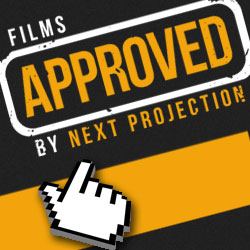DVD Review: A Man Escaped (1956)
 Cast: François Leterrier, Charles Le Clainche, Maurice Beerblock
Cast: François Leterrier, Charles Le Clainche, Maurice Beerblock
Director: Robert Bresson
Country: France
Genre: Drama | Thriller | War
Official Trailer: Here
Editor’s Notes: A man Escaped released on DVD and Blu Ray on March 26th, 2013 from the Criterion Collection.
In forty years, Robert Bresson made only thirteen feature films. For the spectator who wants to get to know Bresson’s cinema, this sparse filmography is a double-edged sword. On the one hand, one has fewer titles to deal with; on the other hand, each title becomes that much more compact and concentrated, in meaning and its role in the development of Bresson’s cinema, thus requiring an intense spectatorship. Certainly each and every one of Bresson’s films presents an introspective world that is also universal in its spirituality and humanity at the same time. A Man Escaped, however, is Bresson at his most introspective and universal, tracing the story of a man who is imprisoned and plans his escape in minute, tireless, and breathtaking detail. Based on the account of a real-life member of the Resistance, Bresson shapes through the lead character, prisoner Fontaine (François Leterrier), a profound poetics of gesture and visage with the minimalist of means.
A Man Escaped, however, is Bresson at his most introspective and universal, tracing the story of a man who is imprisoned and plans his escape in minute, tireless, and breathtaking detail.
 Known for his absence (or rejection) of establishing shots, the only thing that Bresson provides to set A Man Escaped geographically and temporally is a caption: Lyons, France, in 1943. Following a scene that serves as a kind of prologue to introduce Fontaine, arrested and being brought to prison by the Germans, the film takes place inside the prison for the rest of the running time.
Known for his absence (or rejection) of establishing shots, the only thing that Bresson provides to set A Man Escaped geographically and temporally is a caption: Lyons, France, in 1943. Following a scene that serves as a kind of prologue to introduce Fontaine, arrested and being brought to prison by the Germans, the film takes place inside the prison for the rest of the running time.
Yet it is somewhat misleading to call the opening scene with Fontaine, handcuffed and riding in a vehicle towards the prison, simply a prologue. In fact, its economy of shots to express desire, intent, anticipation, and then action is so compelling and so emblematic of the film’s form and mode of storytelling. A close-up pan encompassing Fontaine’s hand and his eyes, then a medium shot of exchanged looks between Fontaine and the man next to him in the car, interspersed with a shot of the road from Fontaine’s point of view, among other things: all happens without a word and without facial expressions. Moreover, Fontaine’s attempt to escape from the vehicle takes place off-screen: the drama and action is elsewhere while the camera remains stationed inside the vehicle with his fellow prisoner in place, but with sound giving volume and inciting the imagination to visualise what is not seen.
Bresson was vocal about using sound to ‘show’ things to avoid showing them literally; to suggest things, ideas, and presence through sound that provides a different dimension to the spectatorship of the images by provoking the spectator to conjure his/her own images simultaneously. In this framework, the spectator becomes an active one, with vision and hearing equally at work instead of one more privileged than the other. When Fontaine arrives at the prison, off-screen voices of Germans denote the paradoxical on-screen presence unseen. Bresson shows the Germans by focusing only on their bodies, arms, and legs. Paired with the heightened volume of their voices to emphasise their power, providing a shot of their faces becomes unnecessary.
Bresson was vocal about using sound to ‘show’ things to avoid showing them literally; to suggest things, ideas, and presence through sound that provides a different dimension to the spectatorship of the images by provoking the spectator to conjure his/her own images simultaneously.
 By manipulating sound to conjure what one could call contextual images and presence in the spectator, and then juxtaposing such sound with images of what Bresson wants one to focus on the most, namely, Fontaine in his prison carefully planning and executing steps towards his escape, A Man Escaped exemplifies Bresson’s introspection both at a literal and figurative level. Through such juxtaposition, both Bresson and the spectator create a world that is in the making, in contrast to a world that is already made and one that the spectator only has to watch passively. Sound in Bresson’s cinema, then, including A Man Escaped, is not decorative but measured and provocative in the way it makes the spectator participate in meaning making.
By manipulating sound to conjure what one could call contextual images and presence in the spectator, and then juxtaposing such sound with images of what Bresson wants one to focus on the most, namely, Fontaine in his prison carefully planning and executing steps towards his escape, A Man Escaped exemplifies Bresson’s introspection both at a literal and figurative level. Through such juxtaposition, both Bresson and the spectator create a world that is in the making, in contrast to a world that is already made and one that the spectator only has to watch passively. Sound in Bresson’s cinema, then, including A Man Escaped, is not decorative but measured and provocative in the way it makes the spectator participate in meaning making.
In a Bresson film, ‘sound’ also frequently includes voiceover narration. Fontaine’s voiceover narration is compact, terse, and methodical, echoing Fontaine’s movements. In this way, his narration seems to simply describe Fontaine’s thoughts and plan of action. Yet his narration also explains what is not seen and what has not yet immediately taken place, creating a disjuncture between sound and image. As Tony Pipolo writes in his essay in the DVD booklet, ‘For Bresson the word performance did not refer to something that actors did but something the entire organic structure of a film did.’
What A Man Escaped performs, ultimately, is the phenomenology of space: the space of the body and that of the cell. The camera is always focused on Fontaine, his face, his hands, and wherever his body moves, crosses, and finds itself enclosed. The gestures, actions, and voiceover narration are what construct the character, or make the character emerge, which is the obverse of films in general, where characters are always already defined and act accordingly. With his body, Fontaine creates a map of the space of the prison, so as to eventually improvise his escape.
Yet helping Fontaine create a mental map of the prison are his fellow prisoners, despite their initial skepticism. There is thus a mixture of interiority and exteriority, of solitude and the community of prisoners, at work in the film. Also at work to Fontaine’s advantage is luck. The shot of the second spoon that he has the luck of finding to replace the broken one, his hand turning it over several times as if to feel its materiality and realness in the world—set against the still intangible world of escape in his mind—but also to express his small joy in having found it, is perhaps emblematic of Bresson’s minimalism: depth in simplicity, and specifically his fascination with the human hand and the intimacy of seeing it in the process of a gesture, however small.
A depth in simplicity also concludes the film: while the spectator never really obtains any information regarding Fontaine or his belated new cellmate Jost, whom Fontaine makes an accomplice to his escape, Bresson visualises succinctly their individual characters (not to mention ages) through the way they walk, away from the camera, with caution and then with hurried and hesitant excitement at their escape.
DVD Supplements
Stellar they are, including two documentary films on Bresson: a Dutch documentary from 1984, made by two film students who attempt to interview Bresson while he presents his film L’argent at the Cannes Film Festival, and a more recent French one from 2010. Both provide invaluable interviews with those who had worked with Bresson and fellow filmmakers who admire his work. Also among the supplements is the equally invaluable entire episode of the French television series 1965 Cinéastes de notre temps, ‘Bresson: Ni vu ni connu,’ which contains Bresson’s first ever on-camera interview.






















 Review: 42 (2013)
Review: 42 (2013) DVD Review: A Man Escaped (1956)
DVD Review: A Man Escaped (1956) Review: To the Wonder (2012)
Review: To the Wonder (2012) Review: Upstream Color (2013)
Review: Upstream Color (2013) Review: The Company You Keep (2013)
Review: The Company You Keep (2013)




